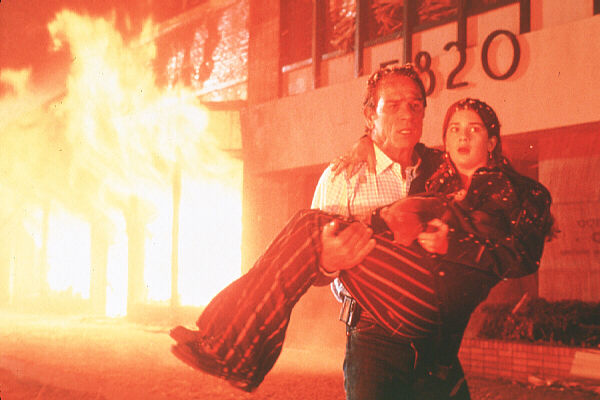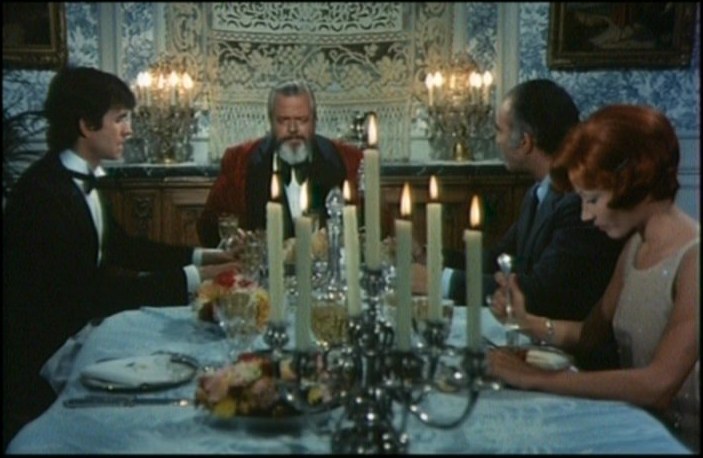
I finally caught
The Squid and the Whale (2005) last night, about a month after all the hoopla started, and while it is not the best long-run film in the city (
Grizzly Man and
Good Night and Good Luck take the top spots) it deserves some of its laurels. There have been, however, many more worthwhile short-run features that I fear might have been overlooked by the rushing crowds (at least here in New York City), mostly the new doc
Henri Langlois: Phantom of the Cinemateque (2005). Langlois often gets lip service as a footnote to Bazin or any of the Cahiers critics, but director Jacques Richard’s film gives Langlois overdue respect as the real father of cinema studies, worldwide.
The Squid and The Whale is the film that we all have stored in us—the unique and universal story of our childhood, our arguing parents, our growing emotions—and writer/director Noah Baumbach certainly fulfilled many peoples’ dreams, I imagine. His film is very empathetic: the acting solid and convincing, and never reaching for the obvious, earnest emotions. Jeff Daniels, especially, as the patriarch Bernard Berkman, is a misogynist contradiction. He is hurt by his wife’s affairs. More hurtful, however, is the fact that she doesn’t live up to the double standard of fidelity: he encourages his sons to sleep around with different women, yet he cannot tolerate “loose” women.
The crux of the story is the divorce of Bernard and his wife Joan, and the joint-custody of their children, the teenage Walt, and the younger Frank. The family cat is also given particular attention: unable to agree on a permanent home, it travels with the children from house to house. The separation increases all the characters’ neuroses. We see the father change from victim to ardent gaslighter, and the children become increasingly unstable emotionally. Walt, especially, picks up his fathers’ habits: he dates a young girl, only to throw her over in hopes of something better coming by.
The last quarter of the film suffers from poor writing, the final scene especially. The conclusion relies on the “squid and the whale” metaphor, which is a reference to a museum exhibit that Walt would visit with his mother when he was still a child. In it, a giant squid is both attacking and being eaten by a whale. As a symbol, it feels very closed: the victim/aggressor metaphor seems too flaccid, and the memory too personal, to strike that “universal” chord that Baumbach had been playing the entire film. The ending, while avoiding facile reconciliation, is facile in its ambiguity.
Baumbach’s directing relies too heavily on the script. As nice as it is to see such solid actors perform on screen (Daniels, and Laura Linney as the mother), I can’t help but imagine
The Squid and the Whale as one of those radio productions that were thrown onto the silver screen in the early throws of sound cinema ecstasy. There is no visual storytelling in the film, and in that sense, it’s a very literary movie. (So fitting, seeing how both parents are part of the New York literati, Bernard on his way out, and Joan on her way in.)
Going back to Langlois, for a moment, one can clearly see his influence (in the guise of New Wave filmmakers) on Baumbach. The father has a poster of Jean Eustache’s
The Mother and the Whore (1973) in his house, and right before medics lift the stretcher into the ambulance, the father brushes his lips with his thumb, mimicking Belmondo at the end of
Breathless (1960). A more subtle allusion is to Truffaut’s
The 400 Blows (1959): the torment of living with two fighting parents, and the children’s way of coping with them, is akin to both films. Antonie Doniel, however, is more of a hard-ass in the tradition of Cagney, whereas Walt and Frank seem a world away from stolen typewriters and military schools: they are definitely the product of a privileged, middle-class. But, unlike New Wave directors, Baumbach doesn’t quite understand the mythology of cinema. Yes—Baumbach does reference the mannerisms of Belmondo, but by having the character explicitly say what the allusion is, words once more overpower the image, and more than a cinematic reference, it becomes a literary allusion. Words predate every image. The picture fails to have a “look” of its own, and because of that The Squid and the Whale is an underdeveloped film.









































